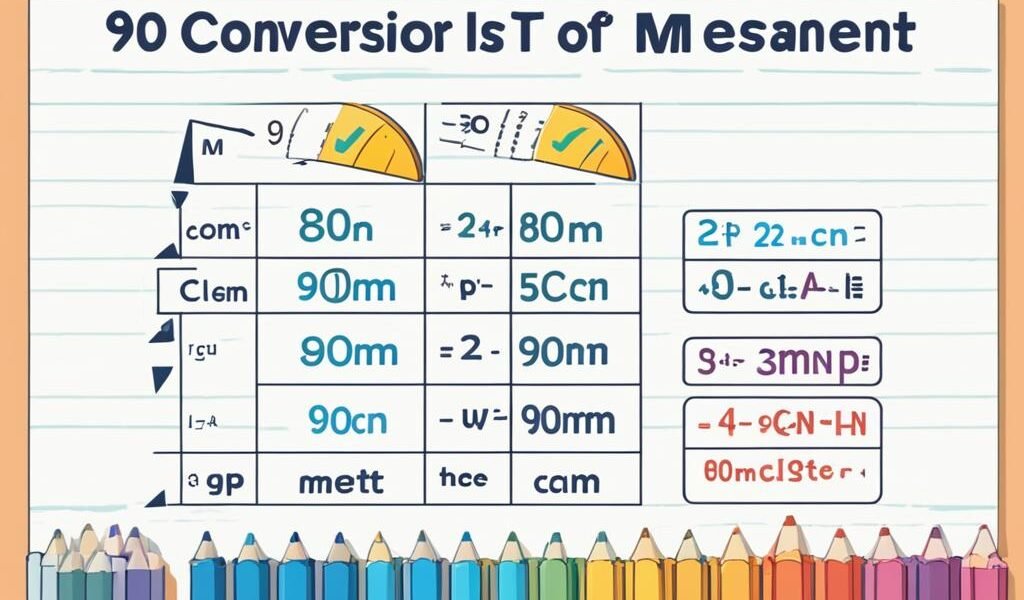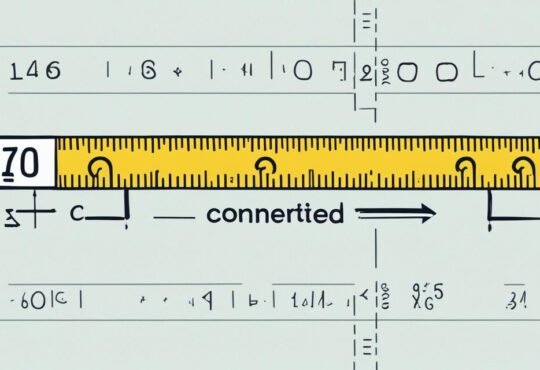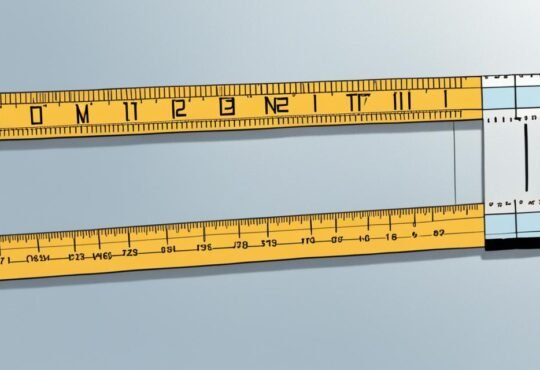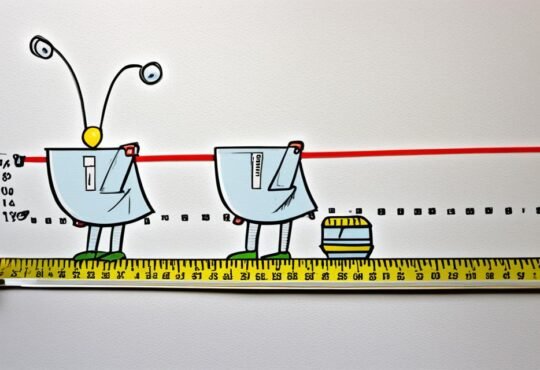
Convert 90cm to Meters – Quick & Easy Guide
Are you looking to convert 90 centimeters to meters? Look no further! We have a quick and easy guide to help you with this conversion. Whether you’re studying math, working on a home project, or simply curious, knowing how to convert centimeters to meters can come in handy.
To convert 90cm to meters, you can use a simple conversion formula. Since there are 100 centimeters in a meter, you just need to divide the number of centimeters by 100 to get the equivalent value in meters. In this case, 90cm divided by 100 equals 0.9 meters.
Contents
Key Takeaways:
- Converting 90cm to meters is a simple process.
- There are 100 centimeters in a meter.
- Divide the number of centimeters by 100 to get the equivalent value in meters.
- In this case, 90cm is equal to 0.9 meters.
- Knowing how to convert centimeters to meters can be useful in various situations.
Now that you know how to convert 90cm to meters, you can confidently use this knowledge in your daily life. Whether you’re measuring fabric for a sewing project, calculating distances on a map, or solving mathematical problems, understanding the conversion from centimeters to meters opens up a world of possibilities.
Stay tuned for more helpful tips and practical guides on measurements and conversions!
How to Convert cm to Meters: Step-by-Step Guide
Converting centimeters to meters is a simple process that can be done using a straightforward formula. To convert cm to meters, you need to divide the number of centimeters by 100. There are two methods you can use to achieve this conversion:
- Moving Decimal Point: One way to convert cm to meters is by moving the decimal point two places to the left. This means that if you have 90cm, you would move the decimal point from right after the 0 to the left after the 9. This will give you 0.90m, which represents 90 centimeters in meters.
- Multiplying by 0.01: Another method to convert cm to meters is by multiplying the number of centimeters by 0.01. For example, if you have 90cm, you would multiply 90 by 0.01, which equals 0.90m.
Both methods yield the same result. Using either the decimal point or multiplication approach, you can correctly convert cm to meters with ease.
Let’s take a look at an example:
You have a length of 90cm and want to convert it to meters. Using the moving decimal point method, you move the decimal point two places to the left, resulting in 0.90m.
This means that 90 centimeters is equivalent to 0.90 meters.
Converting cm to meters is incredibly useful in various fields, such as architecture, engineering, construction, and scientific research. Being able to express measurements in meters provides a standardized unit that is widely accepted and understood internationally.
| Centimeters (cm) | Meters (m) |
|---|---|
| 1 cm | 0.01 m |
| 10 cm | 0.10 m |
| 50 cm | 0.50 m |
| 100 cm | 1.00 m |
| 500 cm | 5.00 m |
Benefits of using Meters as a Measurement Unit
Meters are a versatile and advantageous unit of measurement when it comes to length and distance. There are several key benefits to using meters that make them a popular choice across various industries and fields.
One of the major advantages of using meters is the international acceptance of the metric system, which includes the meter as its primary unit for measuring length. This global standardization allows for seamless communication of measurements across borders, ensuring clarity and consistency in international collaborations and trade.
Another significant benefit of meters is their basis on powers of 10. This characteristic makes conversions between different metric units straightforward and intuitive. Whether you need to convert millimeters, centimeters, or kilometers, the process is as simple as moving the decimal point or applying a conversion factor. This inherent scalability and convenience contribute to the efficiency of using meters as a measurement unit.
Furthermore, many industries rely on meters as their standard unit of measurement. Engineering, construction, and scientific fields commonly use meters due to the precision and accuracy they offer. By adopting meters as a standardized unit, professionals in these industries can ensure consistency in their measurements, making it easier to compare and analyze data, identify patterns, and make informed decisions.
FAQ
How do I convert 90cm to meters?
To convert 90cm to meters, simply divide the number of centimeters by 100. In this case, 90cm divided by 100 equals 0.9 meters.
What is the formula to convert centimeters to meters?
The formula to convert centimeters to meters is to divide the number of centimeters by 100. You can also achieve the same result by moving the decimal point two places to the left or multiplying the number of centimeters by 0.01.
Why are meters commonly used as a measurement unit?
Meters are widely used as a measurement unit for length and distance due to several reasons. First, the metric system, which includes meters, is used internationally, making it easy to communicate measurements across borders. Second, meters are based on powers of 10, simplifying conversions between different metric units. Finally, many industries and fields, such as construction, engineering, and science, commonly use meters as their standard unit of measurement to ensure consistency and accuracy in measurements.
What are the advantages of using meters as a measurement unit?
Using meters as a measurement unit offers several benefits. Firstly, it allows for easy conversion between different metric units, making comparisons and analyses more straightforward. Secondly, meters are internationally recognized, enabling clear communication of measurements worldwide. Additionally, many industries and fields rely on meters as a standard unit of measurement, ensuring consistency and accuracy in their respective domains.
Convert your measurements here: https://nosygeek.com/convertlive-cm-to-m







